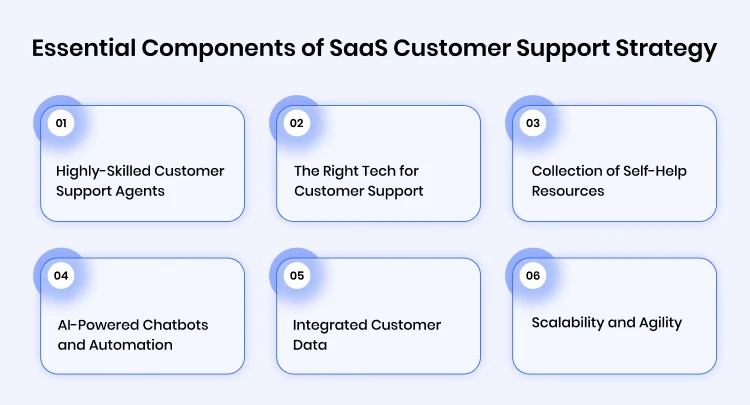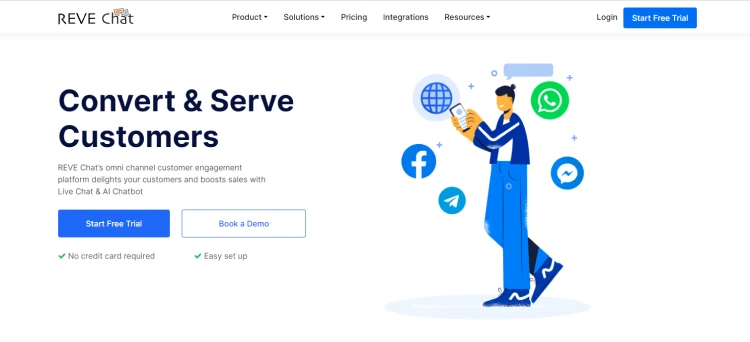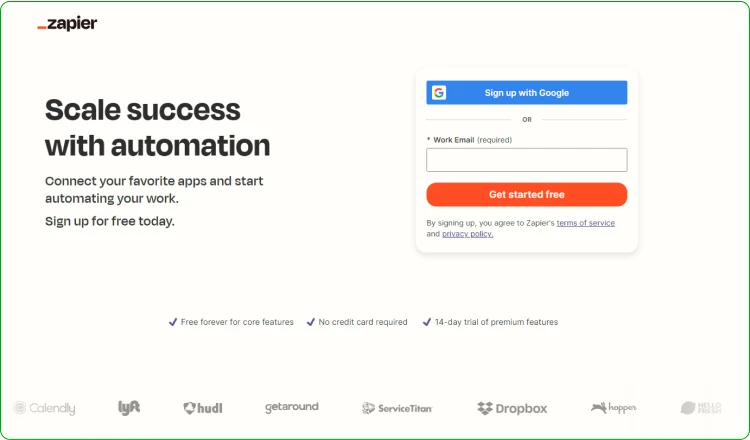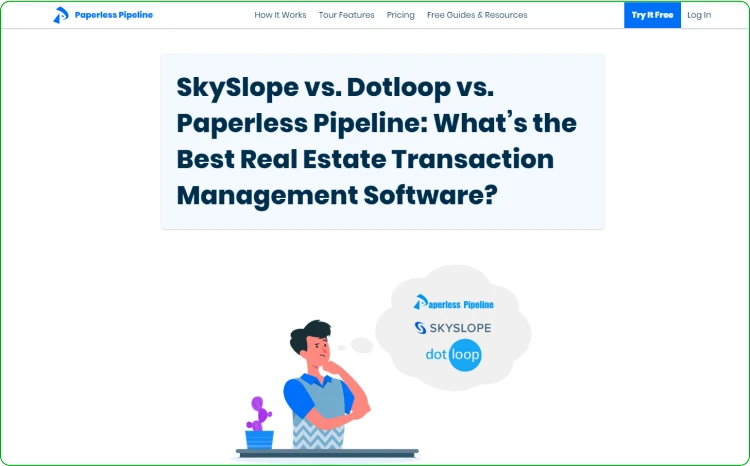 Customer Support
, SAAS
Customer Support
, SAAS

28 April, 2024

Software-based services are on the rise. But problems with software and apps can happen at any time, and if they aren’t fixed quickly, customers get annoyed and might go elsewhere.
Research shows that 96% of customers say support is key to brand loyalty. So, lackluster help means losing users. That’s why good customer support is super important for SaaS companies.
But helping software customers isn’t the same as helping customers in other businesses. After all, tech tools can be complex. So, support people need both tech skills and soft skills to keep customers using the product and get more people to use it too.
Providing good SaaS customer support takes real work. From choosing how customers can get help to the tools used and measuring results, lots of pieces have to come together to give customers a great experience.
So, let’s talk about some real-world strategies and examples so you can do it right.
Contents
SaaS customer support means helping your customers out when they have questions or issues with your subscription-based software service. Whether it’s before they buy, or after, your support team is always there to assist customers.
For instance, you may have to answer emails or phone calls from customers struggling with something. It might also involve things like webinars and online guides to help people get the most out of your product. The support team is there to make sure customers are happy with their purchases.
Without good support, your customers probably won’t be too happy if something goes wrong and they can’t get it fixed. So having a team who knows your software inside out is important.
But reactive customer support isn’t enough these days. To avoid losing customers, you’ve got to get proactive, too. This means you need to address issues before people even reach out. It shows them that you care about their success with your product. It keeps people happy and subscribed for the long haul.
Lots of customers think all that matters for building great support is finding caring people. While that’s key over the long run, some things make an even bigger difference in your strategy. Let’s take a closer look.

As we’ve said, agents are the backbone of your support team. How fast and well they help customers makes or breaks your business.
Research shows most consumers (73%) believe that polite customer service is the key to excellent service. Meanwhile, 77% say unfriendly service hurts their quality of life. And while your agents know your products inside and out, constant training is still crucial.
So, just hiring talented people isn’t always enough. Along with product know-how, you’ll want to coach them on soft skills like empathy, listening actively, keeping a positive attitude, and patience. These human touches can leave a lasting impression on customers.
However, let’s not forget that people recall little from such training. So, you’ll want to focus on creating an internal help hub where agents can refresh skills anytime.
Using the right tools is crucial for the smooth running of your team. Notably, cloud-based support software can take customer satisfaction and productivity to new heights. Here’s how:
Whether by email, phone, or chat, you’ll want your support team to find all customer conversations conveniently in one spot. For this, you’ll want software that puts all emails, phone calls, online chats, notes, and more together based on the customer. That prevents duplicates or missed info.
Too often support means juggling tasks manually. But this gets easier when software automates repetitive workflow by setting smart rules. This could be automatically assigning tickets based on keywords or routing inquiries to the right agents.
If you don’t want to bury crucial insights, you must let go of those messy spreadsheets. Instead, you’ll need something that offers clean reports and metrics to spot ways to improve the customer experience. This could be average response time, resolution time, or CSAT score.
But before buying in, a free trial run is necessary to test if the features fit your goals and company culture. So, you’ll need to find software that offers one.
That’s why you’ll want to look at REVE Chat. The platform offers extensive free trials before you opt for its omnichannel customer engagement platform.
REVE Chat offers a suite of tools to help your business offer proactive 24/7 customer service through chatbot, live chat, video chat, co-browsing, AI-powered virtual agents, and more.
Better yet, your support agents have everything they need in one place. No more jumping between different apps, as they can see full histories and resolve issues quickly. And with analytics built-in, your support will only get better over time.
There’s no way to provide solid SaaS support if people can’t find answers themselves. Statistics show almost 90% of customers in the US expect an online help portal. So, if yours comes up short, they may back out before even trying.
In particular, self-help portals are a must. They reduce interruptions so the representatives can prioritize more urgent issues. Besides, customers always appreciate options to solve minor things independently.
You can get started simply by building an FAQ section or detailed how-to videos. But whatever you do, try to add a quick survey on help pages, too. This will get you crucial feedback on what works and help you stay tuned to customer needs. Empowerment through knowledge is a win-win for all.
AI is becoming a big part of good customer support these days. And chatbots are one-way brands that use artificial intelligence to handle basic questions faster.
For example, an online store may have a chatbot that can instantly answer things like “What are your hours?” or “How do I return something?” That way customers don’t have to wait for a real person.
Chatbots can also figure out when a problem is too complex and needs a human. So, it’ll smoothly pass customers over to an agent who can explore further.
Some other handy uses of AI include helping agents themselves. For example, if an energy company finds customer service reps often have to explain payment due dates, their AI assistant could suggest sample wording. That way the agents stay consistent while also freeing up time to solve more difficult issues.
Besides, if you use REVE chat’s AI-powered chatbot, you can integrate it with various platforms for a unified communication experience for your customers. The best part is it helps you analyze how people are interacting with support. This gives you insights to continuously improve how customers get help.
AI assists both customers and agents. It means simpler questions are resolved immediately.
When customers contact support, over 70% want the agent to have all their details at hand. To make this happen, your support system needs to integrate different sources of customer data smoothly.
The integration process involves pulling together information from your various systems into one centralized place. This includes things like order histories from your sales platform, account details from your billing software, and past support conversations from your chat/email logs.
Bringing all these pieces together gives agents a complete view of the customer before even talking to them. For example, if a customer calls, the agent can see their existing profile, previous purchases, and any other times they contact support.
This saves valuable time by not requiring customers to repeat basic account information each time. It also allows agents to personalize their assistance based on fully understanding the customer’s unique situation and history with your business.
Providing agents with a consolidated customer file through data integration benefits both customers and your business. Customers feel recognized and enjoy faster, more helpful service. For the support team, they can resolve issues quicker using all relevant details at their fingertips.
For software companies, growth can happen super fast sometimes out of nowhere. One day you have a few hundred customers, the next it’s thousands. When that happens, your support setup needs to flex with the changes stat. You don’t want new customers facing long waits because your team isn’t ready.
That’s why it’s crucial to have a support system that can ramp up in no time. Your service desk software should be simple to add more agents as demand grows. And features like automatic case routing ensure new people can jump right in to help.
For example, if your app goes viral on social media overnight, your support team will be overwhelmed the next morning. But if you have a flexible setup with software like Slack, REVE Chat, or SysAid, you can easily double agent capacity within a day.
Customer service means more than just being available and polite. You need strategies to maximize your interactions. Not sure where to begin? Check out some top SaaS customer support best practices:
Customers become easily frustrated when they can’t find support. So, before anything else, you must use clear site navigation and offer the support options in plain sight.
Some companies hide it too well – like Recurly tucked in the tiny footer text. Can you spot it?
But as you can see, Agorapulse makes it super simple to discover.
Hiding where to go for assistance does your customers a disservice. It leads to irritation and people bouncing without answers. On the other hand, if you place help access on all pages, no one has to search around just to get quick assistance.
Onboarding means helping new customers settle into using your software. And it’s about more than just showing button clicks. True customer success means supporting their goals.
Jumping into a new tool can always feel a bit tricky. So, how do you streamline the process? Here are a few things to try:
Self-service means people get fast solutions without waiting in queues. Most customers just want a quick fix, not a live chat. And that’s where a solid help hub pays off.
Check in with your support squad about frequently asked questions. Then, boldly feature those topics on your site. Keep it simple to navigate – supplement written guides with visual aids like pics and video clips.
You’ll want to ensure the help center is mobile-friendly, too. Also, a search feature within your help hub makes finding answers much easier.
For example, Webflow’s online university offers comprehensive tutorials with structured content for all levels of using the CMS.
It’s tempting to hire some entry-level representatives and categorize them as customer care. But that separation can give you serious headaches.
Support spends the most time chatting directly with customers. They know what people want and struggle with and how they talk. That’s why developing tight bonds between care and the rest of the company keeps your focus customer-first as you grow.
To strengthen these cross-team ties, invite support to product meetings. Circulate service exchanges internally and highlight company-wide survey feedback. Building cross-pollinate connections between departments helps big time as well.
Bridging that communication gap this way uplifts the whole customer experience. Smooth handoffs between teams mean happier customers long-term.
Many companies assume faster is always better for helping customers. But it isn’t that simple.
Take time to see what methods your people use to reach you. Check if they’re asking for options you don’t offer yet.
You don’t want to force support through a new avenue unless it could be a real game-changer. Customers will appreciate a great solution, even over a less liked channel, more than waiting for a mediocre answer where they want it.
Quality over quantity is key. Do a few communication routes excellently rather than overcomplicating things with multiple choices. Your community will respect that way more.
After settling your primary contact methods, you’ll want to form your support system around them. And generally, one central hub makes more sense than specialist tools for each channel. It keeps everything organized in one place, so you don’t have to switch between separate tools.
That’s where REVE Chat can help. The platform brings everything together in one clean interface by covering:
Your people are the real experts on what you’re doing right or wrong with support. So, why not give them a voice to support your business further?
For example, you can include links at the bottom of emails asking if the response hit the mark or fell short.
Surveys are also key to understanding customer satisfaction, how hard they have to work to get help, and if they would recommend you to others. Offer these regularly within interactions to gain valuable input on boosting both your product and support approach.
Of course, going above and beyond for customers makes things better, but managing what they expect is huge for good service, too.
Don’t make promises you can’t deliver on – those often backfire. Lay out what people can realistically count on, and then you have room to impress them at times.
Keep it real about timelines, solutions, and everything relevant. Underpromise and overdeliver when the chance arises. Happy customers come from honesty about what’s reasonably mixed with occasionally surprising them in a great way.
If your team is overburdened or you need extra know-how, outsourcing could help level up your SaaS customer care.
Partnering with an outfit that’s all about SaaS assistance can supercharge what you offer. Not only do they manage increased traffic and bring niche skills, but some can work 24/7 to serve various time zones.
This keeps quality high while freeing your crew to focus on core business growth and development.
Good customer support takes the whole team to work together. If each department is doing its own thing, important customer info can fall through the cracks.
Encouraging your agents to collaborate is key. For example, you can have regular check-ins where recent cases are discussed. This helps everyone learn from each other.
You could also set up a chat room or message board so the team can discuss troublesome issues in real-time. Getting multiple perspectives might help solve tough cases.
It’s also useful to gather feedback from your whole customer-facing crew. Hold brainstorming sessions and ask frontline staff, success managers, and anyone with the customer contact for thoughts on what’s working and what isn’t.
Maybe sales see a common question that could be automated. Success coaches notice a pattern of frustrations. Together you can use those insights to continuously improve the experience.
It’s important in customer support to always be looking at how you can do even better. Review what’s working and what needs a change regularly.
You can check in on things like how quickly issues are solved, customer satisfaction scores, and how your agents feel about training. Are certain problems coming up a lot? Dive into the numbers to spot areas for improvement.
Set clear milestones, too, so everyone’s focused on the same page. Instead of a vague goal to “get better eventually”, commit to something measurable like “reduce average response times by 15 minutes by next quarter”.
Maybe customer surveys show your self-service info could be clearer. So, overhaul your online help articles with simpler language and more examples customers understand.
Agents may tell you they need refreshers on advanced product features since new updates. Then, you could adjust training to cover any gaps accordingly. Small tweaks like these, tracked over time, can lead to real gains in customer happiness.
Your support agents are the front line and interact with customers daily. But do you know how well they do it or where they could do better?
Unless you track key stats, you won’t know. And to make smart calls, you’ll need the right metrics to evaluate your team and boost the quality of service.
Most successful companies benefit from regularly reviewing numbers and adjusting where it uplifts customer satisfaction. They keep tabs on what impacts service quality and then iterate to deliver over expectations.
So, how do you know which metrics are the right ones to track in your SaaS environment? Here are six crucial measurements that can give you deep insights into your customer support operations:
Companies that have mastered customer care don’t just enjoy satisfied customers. Their reputation for excellent service becomes a significant selling point itself.
80% of People will gladly spend extra money to work with an outfit famous for taking such good care of their needs.
When support stands out, it tells potential buyers you’re all about the consumer experience. That level of commitment earns serious brand love and wallet share.
Below are a few companies renowned for their support, which is likely a big part of their success.

REVE Chat helps businesses provide top-notch support to their customers through its flexible and user-friendly software.
The company understands that great customer service is key for software companies to build trust and loyalty with their users. That’s why the platform makes it easy to process all customer requests in one place, whether through chat, email, messaging apps, and more.
Customers love how smoothly REVE Chat allows super-fast and effective customer service on the go. And this is particularly because of REVE Chat’s AI-powered chatbots. They take care of basic to advanced inquiries so customers can work through complex processes themselves.
Besides, with everything in one central view, agents can see everything they need to quickly answer questions when customers need human assistance.
The company is constantly improving to keep support methods easy for how people interact today, whether on mobile or within other apps. This forward-thinking approach earned them a top ranking in the European Business Review.

MailChimp is an email marketing platform known for fancy campaigns and detailed analytics.
As soon as you sign up, you won’t have to wander around, as they lay out everything. Their giant help hub helps set up accounts, pick audiences, craft campaigns, and check stats in easy steps.
To serve worldwide, MailChimp provides a help center in English, French, Portuguese, Spanish, and German. From onboarding tutorials to COVID-focused articles, you’ll find tons of know-how there.
Besides, if you still have an unanswered question, you can send them a message through the contact form.

Solving issues on social media is way cheaper than call centers, over 80% cheaper based on studies.
Shopify realized this fast. They’ve got an outstanding Twitter support account responding to complaints and sharing news, updates, and notifications.
If you’re a SaaS company, you can use social platforms to meet customers where they are and quickly solve problems. Plus, proactive posts can update your customers timely and stop your support squad from getting flooded with contact.

Zapier supports everyone – from first-timers to professionals running complex integrations across tons of tools.
How do they do it so well? They offer different paths for help, like community support and detailed expert guides.
Plus, Zapier is all about everyone and every platform getting involved. This keeps the whole crew in touch with customers so all feel invested in supporting success.
Whether fresh or fierce with automation, Zapier’s versatile help styles and team-wide approach always give you smooth sailing. Their support system works wonders, scaling from newbies to coding wizards.

SkySlope makes broker software and saw an epic 97.5% customer satisfaction in 2019. How did they do it? Customers say the reps are incredibly patient.
SkySlope prioritizes taking however long it takes to fully solve issues. As they said, “We strive to provide as much time as needed for customers. Also, to make the experience phenomenal.” Their dedication to seeing things through gives customers the help they need when they need it.
Most companies see customer support as an annoying chore. But when done right, it can massively help your bottom line, retention, products, and even sales.
Fantastic support smooths customers through the buying process. And when someone’s deciding between you and a competitor, your amazing help could tip the scale your way.
Start with a smart plan. Pick the right tools to make that plan happen. Hire a top-notch support squad. Make sure people get what they want most from your team. And track how you’re doing to keep progressing. When you put care into SaaS customer support, you’re sure to watch it benefit your whole business.
And if customer engagement gets too overwhelming, REVE Chat’s extensive suite of interaction tools is there to get you through easily. Sign up today to start seeing results right away.
Check also: Customer Service Vs Customer Support: Key Differences